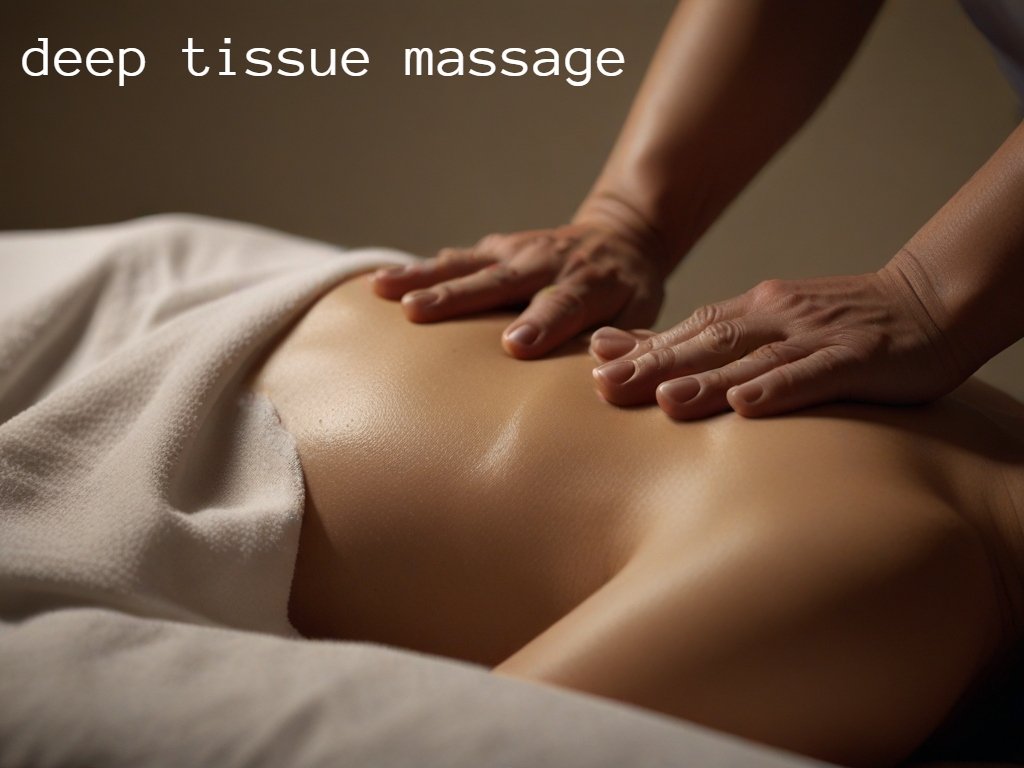Deep tissue massage is a therapeutic technique focusing on the deeper layers of muscles and connective tissue, distinguishing it from the more superficial Swedish massage. It targets chronic tension areas like the stiff neck, lower back, and sore shoulders, becoming a crucial solution for those suffering from chronic pain and muscle pain. Its intensity penetrates deep into muscle layers and pressure points, providing relief and aiding in injury treatment and inflammation reduction.
Comparing deep tissue massage to Swedish or other massage techniques reveals its unique place in therapeutic practices, especially for its effectiveness in realigning muscle fibers and connective tissue. This article delves into what individuals can expect from deep tissue massage therapy, including the preparation for the first session, identifying ideal candidates, and the overall benefits. Additionally, it provides guidance on selecting qualified deep tissue massage therapists, ensuring readers are equipped to make informed decisions regarding their muscle and chronic pain management.
Understanding Deep Tissue Massage
Deep tissue massage, distinct from Swedish massage, specifically addresses musculoskeletal issues rather than general relaxation. This technique involves targeted treatments that may incorporate various approaches such as stretching, kneading, and cupping to address particular areas of concern. A session typically begins with a lighter touch to warm up the muscles, progressively moving to deeper kneading and stroking with varying pressure levels tailored to the client’s needs.
Techniques and Focus Areas
- Application Methods: Utilizing fingers, thumbs, or elbows, therapists apply deep, concentrated pressure to areas of tension and pain.
- Common Focus Areas: Treatments often concentrate on alleviating discomfort in stiff necks, lower backs, and sore shoulders, areas known for harboring chronic tension.
- Specific Problems Addressed: Deep tissue massage is effective for conditions like chronic pain, limited mobility, injury recovery, and issues stemming from repetitive strain or postural problems.
Deep tissue massage operates by physically breaking down adhesions—painful, rigid bands of tissue in muscles, tendons, and ligaments. This process not only relieves pain but also restores normal movement. Techniques such as the stripping method—gliding pressure along muscle fibers—and the friction technique—applying pressure across muscle grains—work together to realign tissue fibers and release adhesions.
Benefits of Deep Tissue Massage
Deep tissue massage offers a plethora of benefits that extend beyond mere relaxation, addressing various physical and psychological issues effectively. Here are some of the key benefits:
1. Pain Management
Deep tissue massage is highly effective in managing pain, especially for conditions like lower back pain, sciatica, and plantar fasciitis. By focusing on deeper layers of muscle tissue, it helps release tension and knots, providing relief from chronic pain and discomfort.
2. Improved Circulation and Reduced Inflammation
This massage technique enhances circulation by facilitating the flow of blood through congested areas, while the removal of lactic acid from muscle tissues improves lymphatic circulation. The result is a reduction in inflammation and an improvement in muscle recovery rates.
3. Psychological Benefits
Regular deep tissue massage sessions contribute to reduced stress levels by lowering the body’s cortisol levels. Additionally, they increase the production of hormones like serotonin and oxytocin, which foster relaxation and feelings of happiness. This not only improves mood but also aids in better sleep and overall well-being.
These benefits, backed by numerous studies, make deep tissue massage a preferred choice for those dealing with chronic pain, high stress levels, and various musculoskeletal issues.
Ideal Candidates for Deep Tissue Massage
Deep tissue massage is particularly beneficial for those engaged in high-intensity physical activities or those recovering from injuries. It targets deeper layers of muscle and connective tissue, making it ideal for athletes, runners, and anyone involved in regular physical exertion. This massage technique helps alleviate muscle tension and enhances recovery, making it a preferred choice for maintaining optimal physical condition.
However, it’s essential to consider certain health conditions before opting for deep tissue massage. Individuals with chronic conditions such as low back pain, fibromyalgia, and sciatica can find relief through these targeted massage therapies. Yet, those with medical concerns like blood clotting disorders, recent surgeries, or active cancer treatments should consult their healthcare provider. Deep tissue massage increases circulation, which could pose risks for those with certain health issues.
For those cleared by their doctors, the frequency of deep tissue massages can vary based on personal health goals and the severity of their conditions. It’s crucial to communicate with a qualified therapist about your specific needs and to adjust the frequency of sessions accordingly. This personalized approach ensures that each individual receives the most benefit from their deep tissue massage sessions, tailored to their unique health requirements and recovery goals.
Preparing for Your First Session
Stay Hydrated and Nourished
- Hydration is Key: Begin hydrating at least 24 hours before your session. Drinking plenty of water helps flush out toxins released during the massage, which can be crucial for enhancing the therapeutic effects and reducing potential soreness.
- Nutritious Meals: Eating well before and after your massage ensures your body has the necessary nutrients to benefit from the increased circulation that comes with deep tissue manipulation.
Dress Appropriately and Communicate
- Comfortable Clothing: Opt for loose, comfortable clothing to the session. This choice aids in easy movement and less discomfort post-massage.
- Clear Communication: It’s vital to inform your therapist about any specific areas of concern or past injuries. This dialogue will help tailor the session to your needs, ensuring focus on your specified areas.
Post-Session Care and Follow-Up
- Continued Hydration and Rest: Keep drinking water after the session to help your body eliminate waste and toxins. Also, ensure you get a good night’s sleep to allow your muscles to recover efficiently.
- Schedule Further Sessions: Regular deep tissue massages can significantly improve muscle health and overall well-being. Discuss with your therapist the best frequency for your sessions based on your personal health goals and conditions.
What to Expect During the Session
During a deep tissue massage session, initial discomfort is common, especially when the therapist targets areas with accrued tension and knots. The process begins with the therapist employing light pressure to warm up the muscles, a crucial step to prepare the body for deeper work. This gradual approach helps mitigate the intensity of diving directly into deep tissue techniques.
- Initial Muscle Warming: The therapist initiates the session with gentle strokes to increase blood flow to the muscles, setting a foundation for more focused work.
- Progressive Pressure Application: As the session progresses, expect the therapist to increase pressure, using slow strokes and deeper direct pressure with hands, fingers, and sometimes elbows, to effectively target deeper layers of muscle and fascia.
- Communication and Adjustment: It’s vital to communicate with your therapist throughout the session. If the pressure feels too intense, a good therapist will adjust techniques to ensure comfort while still working effectively on problem areas.
Experiencing some soreness post-session is normal and typically subsides within a couple of days. This slight discomfort is a natural response to the intensive muscle manipulation performed during the session, aimed at breaking down adhesions and realigning tissue.
Finding a Qualified Deep Tissue Massage Therapist
To ensure you receive the most effective deep tissue massage, selecting a qualified therapist is crucial. Here are some recommended steps to find a professional who meets your needs:
Referrals and Recommendations
- Ask Healthcare Providers: Your doctor or physical therapist can often provide referrals to trusted massage therapists who specialize in deep tissue techniques.
- Family and Friends: Recommendations from people you trust can be invaluable. They can share their personal experiences about the effectiveness and professionalism of the therapist.
- Professional Associations: Utilize resources like the National Certification Board for Therapeutic Massage & Bodywork or the American Massage Therapy Association to find certified professionals in your area.
Checking Credentials and Specializations
- License Verification: Always check if the therapist holds a valid license. For instance, in Texas, this can be verified through the Texas Department of Licensing and Regulation.
- Specialty in Deep Tissue Massage: Ensure the therapist has specific training and certification in deep tissue massage, which is crucial for addressing more profound muscular issues.
Evaluating the Therapist
- Initial Consultation: An initial meeting or consultation can help you assess the therapist’s approach and compatibility with your needs.
- Therapeutic Goals: Discuss your specific health issues and goals to see if the therapist’s expertise aligns with what you require.
- Avoid Red Flags: Be cautious of therapists who discredit conventional medicine or advocate for unproven treatments like detoxification without scientific backing.
By following these steps, you can find a deep tissue massage therapist who will effectively address your specific muscle and pain management needs.
Conclusion
Throughout our exploration of deep tissue massage, it’s clear that this specialized approach offers a significant avenue for managing chronic pain, enhancing circulation, and facilitating muscle recovery.
By delving into the specific techniques employed, the potential benefits realized, and considerations for those who are best suited to this therapy, we’ve underscored the critical role deep tissue massage plays in a comprehensive wellness regimen. The emphasis on selecting a qualified therapist further ensures that individuals seeking relief can do so with confidence, armed with the knowledge needed to make informed decisions about their health and well-being.
The journey toward alleviating chronic pain and improving physical health through deep tissue massage is one that promises not only immediate relief but also long-term benefits. As we’ve seen, when approached with an understanding of one’s health conditions and goals, and undertaken with a skilled therapist, deep tissue massage stands as a powerful tool in the pursuit of pain relief, enhanced mobility, and overall health improvement.
It beckons as a call to action for those seeking effective solutions to persistent musculoskeletal discomfort, offering a path to not just recovery, but to a more vibrant, pain-free life.
FAQs
1. What exactly is deep tissue massage?
Deep tissue massage is a specialized massage technique that applies deep pressure using slow strokes and firm finger pressure. It aims to alleviate tension and tightness in the deep layers of muscles and connective tissues, primarily focusing on areas of significant discomfort.
2. How does deep tissue massage differ from deep muscle massage?
Deep muscle massage and deep tissue massage both target muscles and connective tissues. However, deep muscle massage typically addresses the larger muscles and tendons across the body, whereas deep tissue massage concentrates on specific areas, reaching the more obscure muscles and connective tissues.
3. What is the name for the most intense form of tissue massage?
The most intense form of tissue massage is known as deep tissue massage. This technique is akin to Swedish massage but involves more pressure. The therapist uses deep finger pressure and slow strokes to reach the deepest layers of muscle and connective tissues, helping to release tension.
4. What are the distinctive benefits of deep tissue massage?
Deep tissue massage is unique because it not only aids in treating muscle pain and improving stiffness but also provides mental relaxation. A study in 2014 involving 59 participants demonstrated that deep tissue massage effectively reduced pain in individuals suffering from chronic low back pain.


